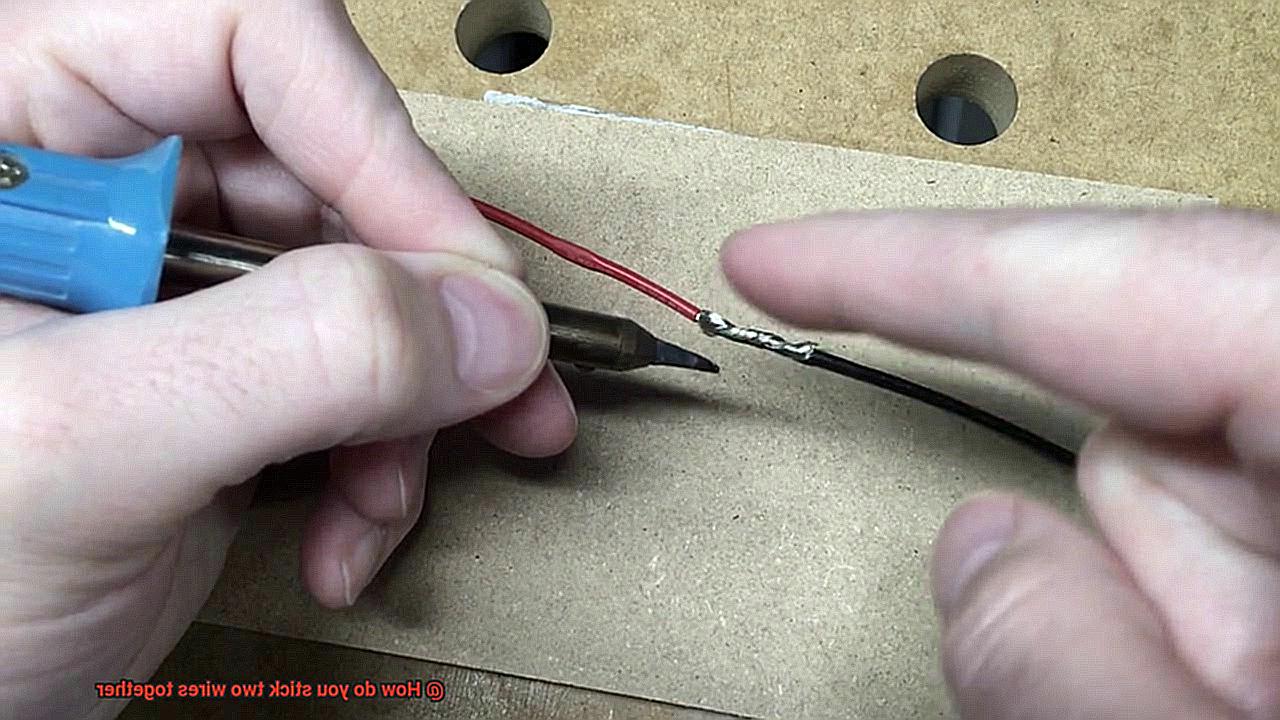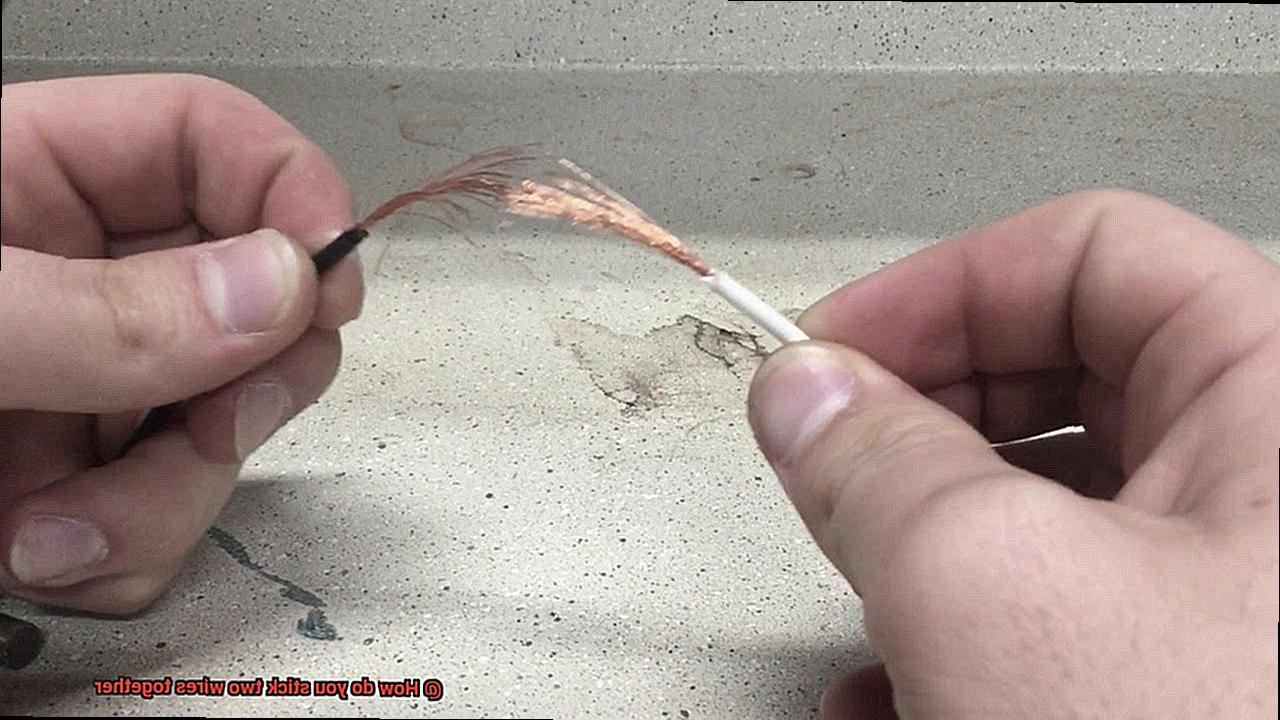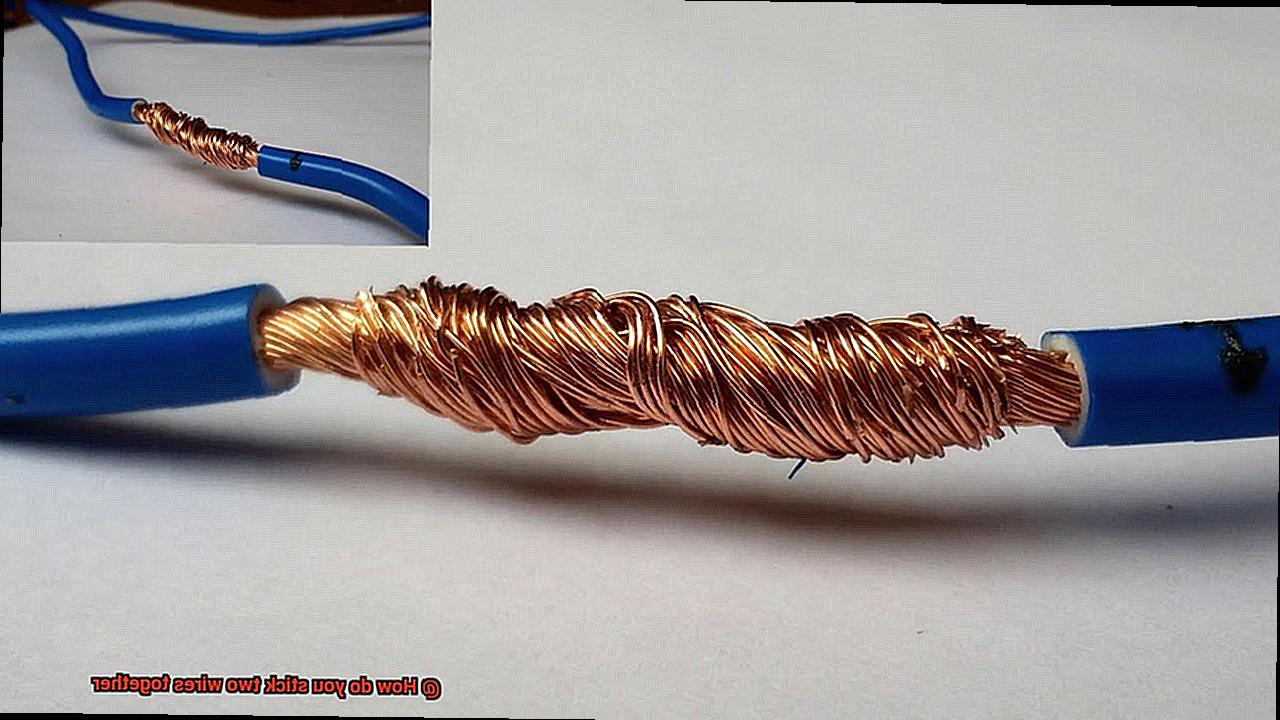Are you a DIY enthusiast or an electrician? Or maybe you just want to make some repairs at home? Whatever the case may be, knowing how to stick two wires together is a crucial skill to have. But, where do you start? Do you need specialized knowledge or fancy equipment? Fear not. Connecting wires is easier than you might think.
In this blog post, we’ll explore the different ways to stick two wires together – from the most basic to the more advanced techniques. We’ll cover all the essential tools and explain each method’s benefits and disadvantages in detail.
First, we’ll start with the basics – twisting wires together or using wire connectors. These methods are simple but effective and require minimal equipment. Then, we’ll move onto more advanced techniques such as soldering and crimping. While these methods may require some additional tools and skills, they provide a stronger and more secure connection.
We’ll also discuss the importance of using correct materials and following safety practices when working with wires. These tips will help ensure that your connections are reliable and safe.
By the end of this blog post, you’ll have everything you need to know to stick two wires together like a pro. So whether you’re looking for DIY projects or simply want to be prepared for any electrical needs – read on.

What is Soldering?
Contents
Soldering is a fascinating process used in electronics and electrical work to join metal parts together using a metal alloy called solder. This technique creates a strong bond that efficiently conducts electricity, making it essential for attaching wires, components, and circuit boards.
To get started with soldering, you’ll need a few essential tools and materials. These include a soldering iron or gun, solder wire, flux, and a clean work surface. It’s important to choose the right type of solder for the job and follow proper safety precautions, such as wearing protective gear and working in a well-ventilated area.
The process of soldering involves heating up the solder wire with the soldering iron until it melts and flows onto the metal parts being joined. The flux is then used to clean the metal surfaces and help the solder flow smoothly. Once the solder cools and solidifies, it creates a strong bond between the two metal parts.
Compared to other methods of joining metals, such as welding or brazing, soldering uses a lower temperature and does not require melting the metal parts being joined. This makes it a more precise method of joining small electronic components and wires.
There are different types of solder available, including lead-free options for environmental safety. It’s crucial to choose the right type of solder for the job to ensure a successful project.
Benefits of Soldering
As an expert in the field, I can attest that soldering is the preferred method for many applications due to its numerous benefits.
First and foremost, soldering creates a strong joint that forms a permanent bond between two wires. This is crucial for electronic devices that require a reliable connection to function properly. Not only is the joint strong, but it also ensures low resistance, making it ideal for devices that require high conductivity.
Durability is another benefit of soldering. Soldered joints are built to last and can withstand exposure to harsh conditions, making them ideal for devices that need to withstand wear and tear.
Soldering is also cost-effective, as equipment is relatively inexpensive compared to alternative methods of joining wires. Plus, it’s incredibly versatile, capable of joining different types of metals and wires of varying thicknesses. Unlike other methods, such as using glue or clamps, soldering requires no additional materials.
In addition to its practical benefits, soldering also produces a clean and neat connection that won’t interfere with the functioning of the device. This makes it an ideal choice for intricate electronic devices.
What is Crimping?
Crimping is a method used to connect two wires together by compressing them using a specialized tool. This process involves stripping the insulation from the ends of the wires and then inserting them into a connector or terminal. The connector or terminal is then crimped, creating a secure and long-lasting connection.
Crimping is widely used in electrical and electronic applications, from the automotive and aerospace industries to telecommunications and home DIY projects. It offers several advantages over other methods of connecting wires.
Firstly, crimped connections are incredibly reliable. Unlike twisting wires together or using electrical tape, crimped connections are less likely to come loose or break apart over time. This makes them ideal for high-vibration environments or anywhere that a strong, stable connection is essential.

Secondly, crimping is quick and easy. Compared to soldering, which requires specialized tools and skills, crimping can be done quickly and easily with just a few basic tools. Plus, it doesn’t pose the same fire hazard as soldering.
Crimping also allows for easy identification of wires as different colored connectors can be used for different wires. Moreover, it offers a more secure connection than simply twisting wires together or using electrical tape which can result in exposed wiring or short circuits.
Benefits of Crimping
Firstly, crimping provides a secure and reliable connection. The compression of wires creates a tight bond that is less likely to come loose than other types of connections, giving you peace of mind that your connections will last longer and hold up better under challenging conditions.
Secondly, crimping is a quick and easy process that requires no special equipment. Unlike soldering, which involves heating up the wires and melting solder onto them, crimping can be done speedily in the field, making it an ideal option for those who need to make connections on the fly.
Thirdly, crimping offers a neat and tidy solution for wire connections. Other methods may leave you with loose wires or bulky components that are difficult to manage. With crimping, the wires are neatly compressed together, creating a clean and organized appearance that is especially important for applications where aesthetics matter.
Adhesive Products for Wires
With a plethora of adhesive products available in the market, it can be overwhelming to choose the right one. But have no fear. In this post, we’ll delve into the various types of adhesive products available for wire bonding and factors to consider when selecting an adhesive product.
One of the most popular adhesive products for wire bonding is electrically conductive epoxy. This specially formulated adhesive product provides a robust bond between two wires while maintaining electrical conductivity between them. It’s ideal for applications where a strong bond is required, and electrical conductivity is a must-have feature. Electrically conductive epoxy is widely used in the electronics industry for bonding wires to circuit boards.
Another sought-after adhesive product for wire bonding is the heat shrink tube. Made of a special polymer that shrinks when heated, heat shrink tubes create a durable bond between two wires while protecting them from moisture and other environmental factors. Heat shrink tubes are commonly used in automotive and marine applications.
Aside from electrically conductive epoxy and heat shrink tubes, there are several other adhesive products available for wire bonding. These include silicone sealants, cyanoacrylate glue, and double-sided tape. However, it’s important to note that each of these adhesive products has its own set of advantages and disadvantages.
When selecting an adhesive product for wire bonding, several factors come into play. One crucial factor is bond strength. The adhesive product should provide a sturdy bond that can withstand mechanical stresses without failure.
Electrical conductivity is another critical factor to consider when bonding wires in an electrical circuit. Therefore, you’ll want to choose an adhesive product that maintains electrical conductivity between the wires.
Lastly, it’s imperative to select an adhesive product compatible with the materials being bonded. Proper preparation of the surfaces to be bonded is equally vital. This includes cleaning the surfaces thoroughly to remove dirt, oil, or other contaminants that may impact the bond strength.
Choosing the Right Adhesive Product
Choosing the right adhesive product is essential for creating a secure and long-lasting bond when sticking two wires together. With so many adhesive options available in the market, it can be overwhelming to select the appropriate one. Don’t worry, we’ve got you covered. Here are some of the different types of adhesives and how to select the best one for your needs.
First off, let’s dive into epoxy adhesives – one of the most popular choices for joining wires. Epoxy adhesives consist of a resin and a hardener that react when mixed together, forming an incredibly strong bond. They are ideal for bonding wires that will be exposed to harsh environments or subjected to constant movement. With excellent resistance to heat, chemicals, and physical stress, epoxy adhesives are reliable and long-lasting.
If you have small or delicate wires that need to be secured without adding extra weight or bulk, cyanoacrylate (super glue) is the adhesive for you. This fast-drying adhesive forms a strong bond quickly and is perfect for temporary bonds. However, super glue is not recommended for wires that will be exposed to high temperatures or harsh chemicals.
For a quick and easy way to join wires without the need for mixing or curing time, double-sided tape can be a good option. It’s also ideal for situations where the wires need to be easily removable without leaving any residue behind. Double-sided tape offers convenience and versatility, but it may not provide as strong of a bond as other adhesives.
Lastly, silicone sealant is another adhesive that can be used to stick two wires together. With excellent flexibility and the ability to withstand extreme temperatures and harsh weather conditions, silicone sealant is perfect for sealing and bonding wires that are exposed to water or moisture.
When choosing an adhesive product, it’s crucial to consider the environment and conditions that the wires will be exposed to. Factors like bond strength, electrical conductivity, material compatibility, and surface preparation should also be taken into account. By doing so, you can ensure that you select the right adhesive for your specific needs.
The Importance of a Secure Connection
A secure connection is the backbone of any electrical system. It ensures that wires are held firmly in place and decreases the likelihood of faults or hazards. The importance of a secure connection cannot be overstated, especially when dealing with high levels of current.
The risks involved with loose or weak connections are significant. Resistance can cause wires to heat up and potentially lead to fire incidents. Therefore, it’s essential to keep the electrical conductivity between two wires stable and secure.
To create a secure joint, there are several methods available, including soldering and crimping. Soldering involves heating up a flux-coated wire joint and melting solder onto it, creating a strong bond between the two wires. Crimping uses a tool to compress a metal sleeve around the wires, creating a more reliable connection than twisting or taping.
By using either of these methods or any other suitable method, you can maintain safety and reliability in electrical systems. Taking the time to create a strong joint will pay off in the long run by preventing accidents and ensuring consistent performance.
Here are some reasons why you should prioritize the importance of a secure connection:
- Safety: A secure connection reduces the risk of electrical hazards and potential injuries caused by faulty connections.
- Reliability: A secure connection minimizes the likelihood of faults occurring in an electrical system, leading to consistent performance.
- Durability: A secure connection lasts longer than weak or loose connections, reducing the need for frequent repairs or replacements.
Common Mistakes to Avoid when Sticking Wires Together
To ensure a safe and effective connection, it’s important to avoid these common pitfalls.
Firstly, using the wrong adhesive can cause issues. Not all adhesives are created equal. Using a general-purpose glue may not provide the necessary electrical conductivity required for the connection to work properly. Make sure you’re using an adhesive that is specifically designed for electrical connections to avoid any problems down the line.
Another mistake is not preparing the surfaces of the wires before applying the adhesive. The surfaces of the wires must be clean and free from any dirt, oil, or other contaminants that may interfere with the adhesion process. Properly cleaning and preparing the surfaces before sticking them together will result in a strong and secure bond.
Using too much or too little adhesive can also cause problems. If you use too much adhesive, excess glue can seep out and potentially interfere with other components or cause electrical shorts. On the other hand, using too little adhesive can result in a weak bond that may not be able to withstand the stresses that the wires may encounter. Follow the manufacturer’s instructions for how much adhesive to use to ensure a strong and safe connection.
Finally, once you’ve stuck your wires together, make sure they’re properly secured. Failure to do so can result in the wires becoming loose over time, which could lead to issues such as intermittent connections or complete failure of the connection. Use cable ties or other means of securing the wires as needed to prevent any safety hazards.
Conclusion
Don’t let the simplicity of sticking two wires together fool you. It’s a crucial task that requires careful consideration of various methods and materials to ensure a reliable connection. Whether you opt for twisting wires or using wire connectors, each technique has its own set of benefits and drawbacks. To make the right decision, you should weigh factors such as bond strength, electrical conductivity, material compatibility, and surface preparation.
Soldering is a popular option for creating a strong bond between two wires while maintaining electrical conductivity. Meanwhile, crimping offers an easy way to join wires without requiring special tools or skills. If you’re looking for durability, adhesive products like electrically conductive epoxy or heat shrink tubes can also do the trick.
But no matter which method you choose, safety should always be your top priority. Avoid common mistakes like using the wrong adhesive or not properly preparing surfaces before applying it.






